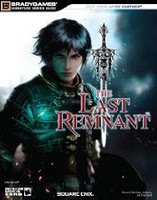I honestly had no idea what to expect from this guide, as I have never bought or thought of buying a strategy guide for a fighting game. I mean, don’t you develop your own strategy for fighting? Develop your own character preferences and styles? So when I picked up this monstrosity of a guide at my local Gamestop, I was shocked by its girth.
After I tried a couple of story levels of the game, I began to see why there is a guide. The combat style is unlike anything I’ve ever played before and am likely to ever play again. Not to mention, there is an ungodly number of unlockables in this game, and it’s nice to have something in print that lists them all. And it’s really for that latter reason that a guide is needed at all. After all, as I previously mentioned, the fun of playing a fighting game is to come up with your own fighting style.
That said, here’s the review.
Review:
Maps
Maps in a fighting game? Oh hell to the yes.
Each level, no matter the part of the campaign mode, is set up like a board game. Enemy pieces and items are scattered across the board, and players have to move their character piece to engage in battles or open chests. Each move the character makes detracts from the given number of Destiny Points (DP), and the final number of DP gets tallied into the final score once the level is completed. Obviously the goal is to complete the level with as many DP as possible, and in addition to including a map of each board with all hidden items and bosses, the guide has a map of the board with a plotted route for the most efficient DP use. However, it also has to be noted that since many hidden enemies and items only appear after the first run-through of the level, most of the DP efficiency routes are only applicable for later run-throughs.
Walkthroughs:
The maps pretty much take care of all walkthrough questions, but the walkthroughs still provide a vast amount of information. For example, each enemy piece is charted out with all individual stats. Each treasure chest has a chart of its contents for each time the level is played, and if a treasure or enemy only appears after an initial run-through, this information will also be listed. But wait, there are two more tables to each level: the awards list for remaining DP for each run-through and the awards for each star rating from level completion.
In other words, players will know every possible award, number, and requirement for every possible outcome when playing each level of the campaign.
Another nicety of the guide is that it doesn’t assume the order the Destiny Odyssey chapters are played. Each chapter has a different difficulty level, and players have the option to play any chapter they want in any order. The guide takes this into account, so at the beginning of each Destiny Odyssey chapter, it assumes that this is the first chapter the player has looked at. It means there is a lot of repeated information, but it also means that players don’t have to flip through other chapters looking for basic information about how the Destiny Odyssey chapters play out.
The only complaint I have about the walkthroughs is that it gives one sentence, if it offers any advice at all, on strategies for defeating the bosses. But as Dissidia is a fighting game, it’s kind of expected for players to get stronger on their own and figure out their own strategies for fighting, no matter if it’s a boss or not.
Appendices
Dissidia may be a fighting game, but it’s still a Final Fantasy game at heart, which means it has all the core features of a RPG, including leveling up, abilities, equipment, accessories, aaaaaand summons. And as one would expect from a complete Final Fantasy guide, all of these goodies, the PP catalog, and countless upgrades and bonus items are all listed in the back along with what it takes to get them. You honestly have to see the fat lot of knowledge in the appendices to believe it. It’s amazing both in what the developers packed into the game and how much detail the writers gave to it.
Bonuses
Writers Joe Epstein and Casey Loe included plenty of game tips in the Game Basics section, including how to activate EX mode to your advantage, recovering bravery quickly, and enhance each attack. But they didn’t stop there. After the plethora of appendices, they included a Secrets & Cheats section in the back, which has information on unlocking the secret epilogue, tips for leveling up quickly, secret passwords for friend cards, how to hack the Mognet, and how to solve all the Moogle quizzes and mysteries.
If all that isn’t enough, there’s also a giant, tear out poster that lists all 151 game accomplishments and all 300+ player icons.
Rating
I don’t think I need to say any further about how much this guide blew me away. Nothing is left out, from the campaign mode to the Duel Colosseum to all the unlockables and awards, and yes, even combat strategies. This contains every piece of information any player could want, and it can all be found as easily as completing the Destiny Odyssey Prologue.
This guide receives and earns a 5/5.
